#blumenbach
Explore tagged Tumblr posts
Text
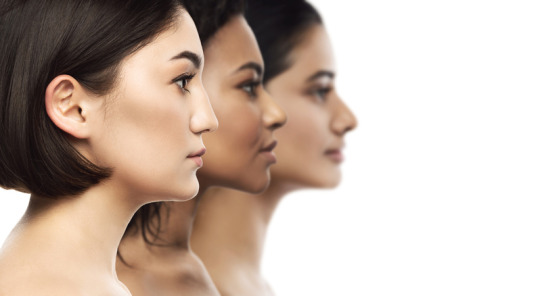
When and why yellow was first applied to people of East Asian descent is rather murky.
The process occurred over hundreds of years. As some scholars have noted, it's not as if there were people with yellow skin. The whole "yellow equals Asian" thing had to be invented. And in fact, there was a time when there was no such thing as "Asian" — even that had to be invented.
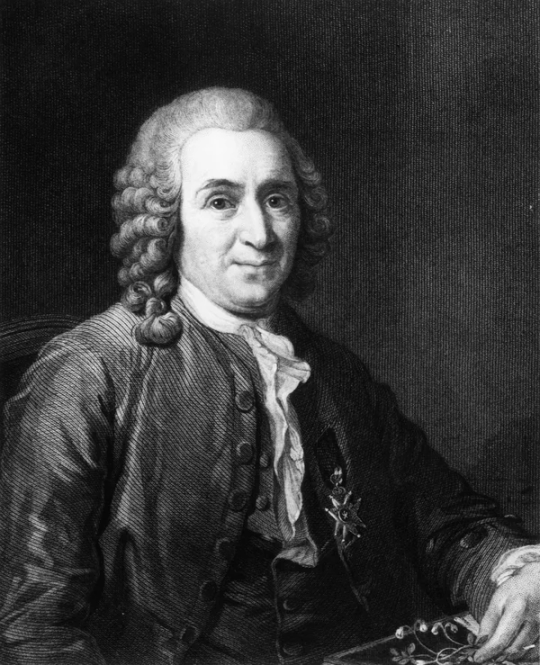
Enter Carl Linnaeus, an influential Swedish physician and botanist now known as the "father of modern taxonomy." In 1735, Linnaeus separated humans into four groups, including Homo Asiaticus — Asian Man. The other three categories, European, African and American, already had established — albeit arbitrary — colors: white, black and red. Linnaeus, searching for a distinguishing color for his Asian Man, eventually declared Asians the color "luridus," meaning "lurid," "sallow," or "pale yellow."
I get this bit of history from Michael Keevak, a professor at National Taiwan University, who writes in his book Becoming Yellow: A Short History of Racial Thinkingthat "Luridus also appeared in several of Linnaeus's botanical publications to characterize unhealthy and toxic plants."
Keevak argues that these early European anthropologists used "yellow" to refer to Asian people because "Asia was seductive, mysterious, full of pleasures and spices and perfumes and fantastic wealth." Yellow had multiple connotations, which included both "serene" and "happy," as well as "toxic" and "impure."
He tells me that there was "something dangerous, exotic and threatening about Asia that 'yellow' ... helped reinforce."
Which might explain why the fear that East Asian countries would take over the West became known as yellow peril.

In 1956, Marvel's short-lived Yellow Claw comic featured a villain of the title's name. He was drawn with a bald head, long scraggly beard, slanted eyes and, yes, fingers that resembled claws. True to the name, his skin had a distinct yellow hue.
That was all make-believe. The real-life consequence of vilifying a race included things like the Chinese Exclusion Act of 1882, which banned Chinese immigration to the United States until 1943; the violence against hundreds of Filipino farmworkers in Exeter and Watsonville, Calif., who were mobbed and driven out of their homes by white Americans in 1929 and 1930; and the incarceration of more than 100,000 Japanese Americans during World War II.
For as long as Asians have lived in the United States, white people have been trying to label us: who we are, what we look like and how we should be described. It was also white people who defined our terminology — for many decades, "Orientals" was the moniker of choice. (And when people hurled slurs at us, we've been called Chinamen, Japs, gooks, Asiatics, Mongols and Chinks.)
That started to shift in the 1960s.
That's when the term "Asian American" was born. At the time, it was linked to political advocacy. Yuji Ichioka, then a graduate student and activist at the University of California, Berkeley, who would later become a leading historian and scholar, is widely credited with coining the term.
This period, often referred to as the Yellow Power Movement, was one of the first times these disparate people — Korean Americans, Vietnamese Americans, Japanese Americans, Indian Americans, Laotian Americans, Cambodian Americans, to name only some — grouped themselves under one pan-ethnic identity.
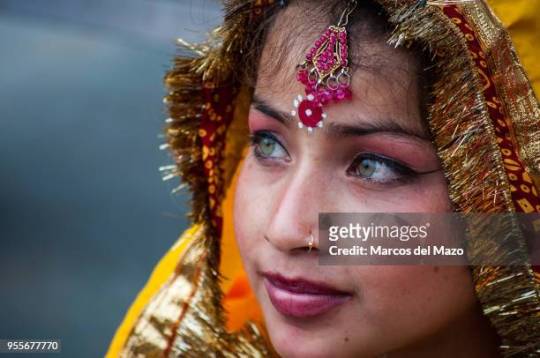
There was power in numbers, which Ichioka knew as founder of the Asian American Political Alliance. In a letter and questionnaire to new members, AAPA made clear that its organization was not just advocating for the creation of Asian American studies courses, but for broader social causes. That included adopting socialist policies and supporting the Black Liberation Movement, the Women's Liberation Movement, and anti-Vietnam and anti-imperialist efforts.
Spurred in part by the activism of the times, the term "Asian American" rose to popularity. It also helped that the Immigration and Nationality Act of 1965 was passed, allowing an influx of Asian immigrants to the U.S.
But over the years, the term Asian American revealed itself to be a complicated solution to the problem of identity.
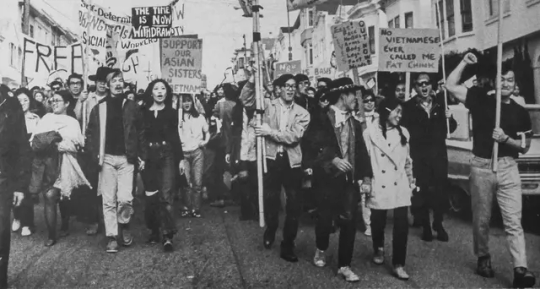
For one thing, most people who technically fit into the "Asian American" category refer to themselves based on their ethnic group or country of origin, according to the National Asian American Survey (NAAS).
Karthick Ramakrishnan, a professor at the University of California, Riverside, and the leader of NAAS, says he and his colleagues found that most Americans think of "Asian Americans" as East Asians.
Karen Ishizuka, who wrote Serve the People: Making Asian America in the Long Sixties, says that "Asian American" is still an important identifier because of the political power it has carried for decades. But it's crucial for people to be educated about what it once meant, she says, because the term has become "more like an adjective now, rather than a political identity."
Ramakrishnan and Ishizuka seem to reinforce why I've been searching for a term like yellow. In all my conversations about this issue, I've found myself remarking how the question of "What about yellow?" feels so hair-pullingly existential. Maybe it's because Asian American seems like it has been watered down from activism to adjective. I find myself wanting a label that cuts a little deeper.
In 1969, a Japanese American activist named Larry Kubota wrote a manifesto called "Yellow Power!" that was published in Gidra, a radical magazinecreated by Asian American activists at the University of California, Los Angeles.
His words were a rallying cry. "Yellow power is a call for all Asian Americans to end the silence that has condemned us to suffer in this racist society and to unite with our black, brown and red brothers of the Third World for survival, self-determination and the creation of a more humanistic society," he wrote.
Kubota wasn't the only one using yellow in a new and different way.
Ishizuka tells me about a bunch of different groups in the 1960s and 1970s: Yellow Seeds was a radical organization in Philadelphia that published a bilingual English-Chinese newspaper of the same name. The Yellow Identity Symposium was a conference at Berkeley that helped ignite the Third World Liberation strikes. The Yellow Brotherhood was an Asian group made up mostly of former gang members in Los Angeles that tried to disband gangs and curb drug addiction. Yellow Pearl, a play on "yellow peril," was a music project started by an activist group in New York's Chinatown.
I call up Russell Leong. He is a professor emeritus at UCLA and was the longtime editor of the radical Amerasia journal. As a kid, he used to make Yellow Power posters in San Francisco's Chinatown.
"Do you call yourself yellow?" I ask him.
"That's an interesting question," Leong says. "If I'm with a group of yellow people like my close friends, I'll call myself a Chink, a Chinaman, a yellow. But in public, I'm not gonna call anyone else that .... it depends what I'm comfortable with. It's the same with my English or Chinese name. Sometimes I'll use my American name. Sometimes I'll use my Chinese name."
Whatever the word, he adds, "I think it's better that we have more words to describe ourselves."
I get it. Despite the incompleteness of any one term, together they can become a powerful tool.
Still, if there were no term like "Asian American" — if it didn't exist, if we gave up on it entirely — then what could we have to anchor ourselves? After all, it's not just about a word; it's about an entire identity.
Ellen Wu, the historian from Indiana, digs into that point: "To circle back to this question of, do we use something like yellow or brown? ... Why do we even feel like we have to?"
Wu acknowledges that we're always craving words that might come closer to encapsulating who we are.
"I think that invisibility — that feeling that we don't matter, that worse, we're statistically insignificant — in some ways really fuels that desire to have a really concise and meaningful way of talking about ourselves," she says.
I pose all of this to Jenn Fang, an activist and writer who runs the appropriately-named blog Reappropriate.
She's not so convinced that yellow would resolve the issues that plague Asian American. It might be a useful identifier if yellow was used very intentionally and people knew its history, she says. But it could also fall into the same traps as Asian American. With ubiquity, it could eventually lose its power.
Fang also thinks that if people were to identify as yellow, there would be more people staying in their own lanes, so to speak — that, say, East Asians who call themselves yellow might not advocate on behalf of Asians who call themselves brown.
"Are you reclaiming the slur, or reclaiming our history?" Fang asks me. "The thing I'm concerned about is — is [yellow] a truly reflective way of talking about the East Asian American experience? Is yellow more nuancing? ... Or more flattening?"
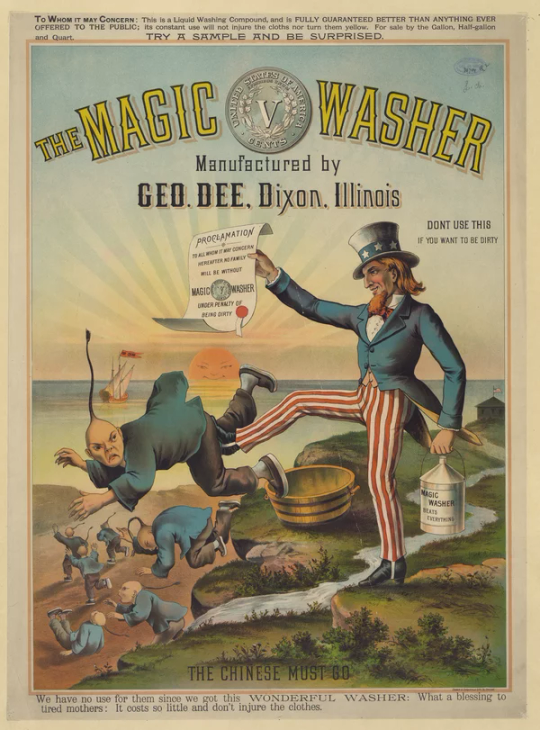
In the pinnacle of the civil rights era, activists used yellow as a term of empowerment — a term they chose for themselves. In some ways, I'm still seeing that today.
When the director of Crazy Rich Asians, Jon Chu, wanted to include a Mandarin version of Coldplay's song "Yellow" in a pivotal scene of his movie, some people were concerned that including it might not fly in such a high-profile movie about Asians. But that was exactly Chu's point. He wrote a letter to the band pleading his case — he wanted to attach something gorgeous to the word.
"If we're going to be called yellow," Chu wrote, "we're going to make it beautiful."
I can't help but think back to a group of people I spoke to late last year.
The Yellow Jackets Collective is an activist group, the name an echo of the 1960s. They're four people in New York City who identify themselves with a wide swath of terms, in addition to yellow: she/her, womxn, brown, Asian American, femme, child of Chinese immigrants, Korean American, 1st gen., first gen. diasporic and "collaborating towards futures that center marginalized bodies."
I send them an e-mail. "Why yellow?"
They point out that they don't just walk around the world calling every East Asian person they meet "yellow."
"Identity ideally is about you and how you feel and what you believe has shaped you," Michelle Ling responds.
I let Ling's words percolate. I don't know if I'll walk around in the world calling myself yellow — maybe to people who have similar experiences to mine; certainly not around people who've flung slurs at me.

Even so, having different words to choose from is itself a comfort. Having yellow in my arsenal makes me feel like my identity doesn't hinge on just one thing — one phrase, one history or one experience.
After a back-and-forth with the group, something they've written stops me in my metaphorical tracks. It's from the Yellow Jackets mantra; a snapback comment that I can't help but appreciate:
"We say Yellow again because at our most powerful we are a YELLOW PERIL and those who oppress us should be afraid. We are watching you. We are making moves."

In “The Travels of Marco Polo,” the people of China are described as “white.” Records left by eighteenth century missionaries also report the skin color of Japanese and other East Asian people as clearly white. Yet in the nineteenth century, this perception quietly gave way to descriptions as “yellow.” In travel books, scientific discourse, and works of art, portrayals of East Asians began presenting them as having yellow skin. What happened in between?

In his 2011 book ��Becoming Yellow: A Short History of Racial Thinking,” National Taiwan University professor Michael Keevak delves deeply into the origins and history of how and why East Asians went from being seen as “white” to being classified as “yellow.”
The first suspect implicated in applying the “yellow” label to East Asian faces is the famed Carl Linnaeus (1707-78). At first, Linnaeus used the Latin adjective “fuscus,” meaning “dark,” to describe the skin color of Asians. But in the tenth edition of his 1758-9 “Systema Naturae,” he specified it with the term “luridus,” meaning “light yellow” or “pale.”

It was Johann Friedrich Blumenbach (1752-1840) who went beyond the coloring ascribed by Linnaeus to apply the completely different label of “Mongolianness.” Regarded as a founder of comparative anatomy, the German zoologist did more than just use the Latin word “gilvus,” meaning “light yellow,” to describe East Asian skin color: he also implicated the Mongols, a name with troubling and threatening connotations for Europeans with their memories of Attila the Hun, Genghis Khan, and Timur.
While the references remained anomalous at first, travelers to East Asia gradually began describing locals there more and more as “yellow.” By the nineteenth century, Keevak argued, the “yellow race” become a key part of anthropology.
But the yellow label came associated with discrimination, exclusion, and violence. Just as no one in the world is purely white or black, neither does anyone actually have skin that is deep yellow. By “creating” a skin color and investing traits such as “Mongolian eyes,” the Mongolian birthmark, and mongolism (the old name for Down syndrome), Westerners made the perceived yellow race synonymous with abnormality. They also responded to the arrival of immigrants from Asia by sounding the alarm over the “yellow peril” - a term with a whole range of negative associations from overpopulation to heathenism, economic competition, and political and social regression. The hidden agenda of this racial color-coding becomes apparent when one considers who benefits from a hierarchy that places “yellow” and “black” beneath “white.”
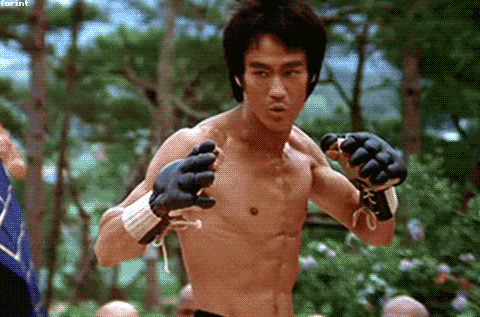
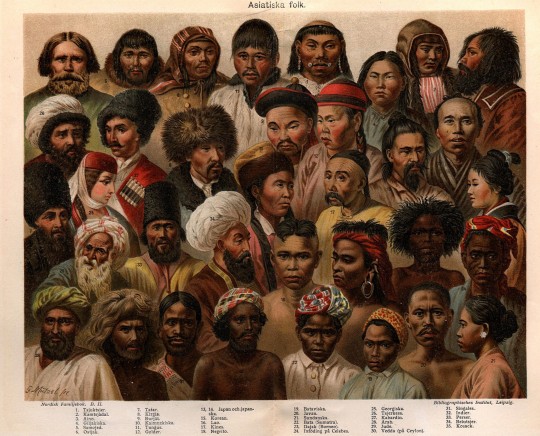
#kemetic dreams#asian#Blumenbach#german#european#exonym#banning exonyms#yellow#white#yellow people#black#black people#racist#conservatism#political#american politics#liberalism#civil rights#racist words#bruce lee#brownskin#brown skin#asian American#asian american literature#asian american history#asian heritage month#asian american author#asian american pacific islander heritage month#stop asian hate#aapi
10 notes
·
View notes
Text

There's an Indigenous page for the ethnic groups in the Caucasus region speaking out against the misuse of the word and bringing education due to the war and erasure going on.
There are a lot of Indigenous pages beginning to form and being highlighted with activism against Russia. This is powerful to see.

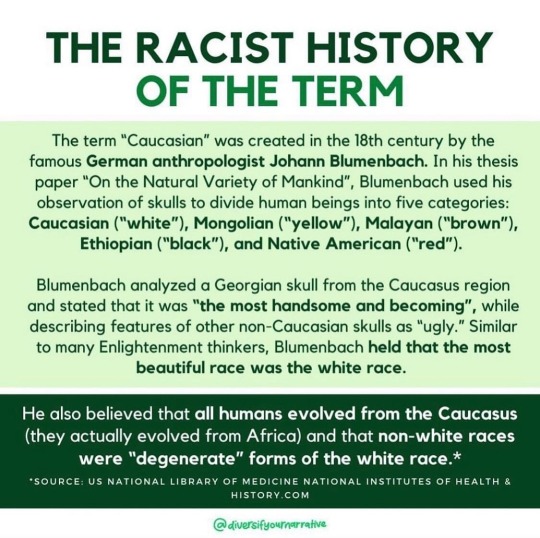
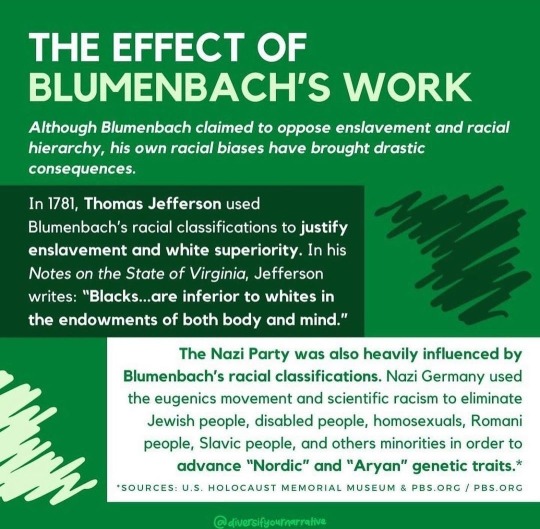
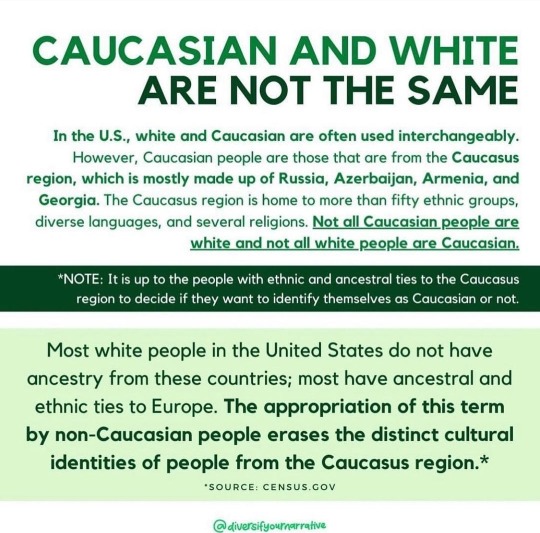
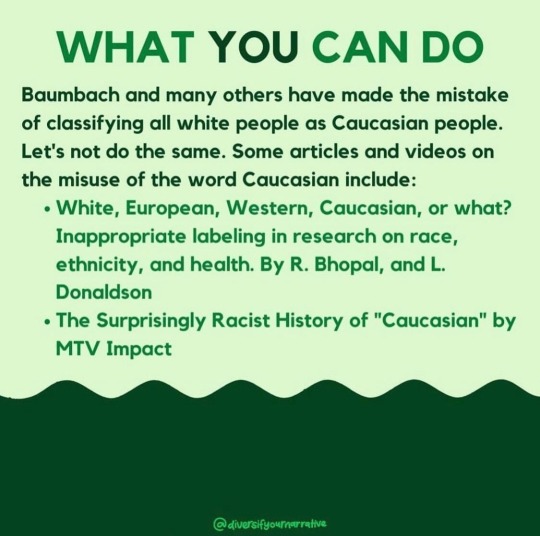
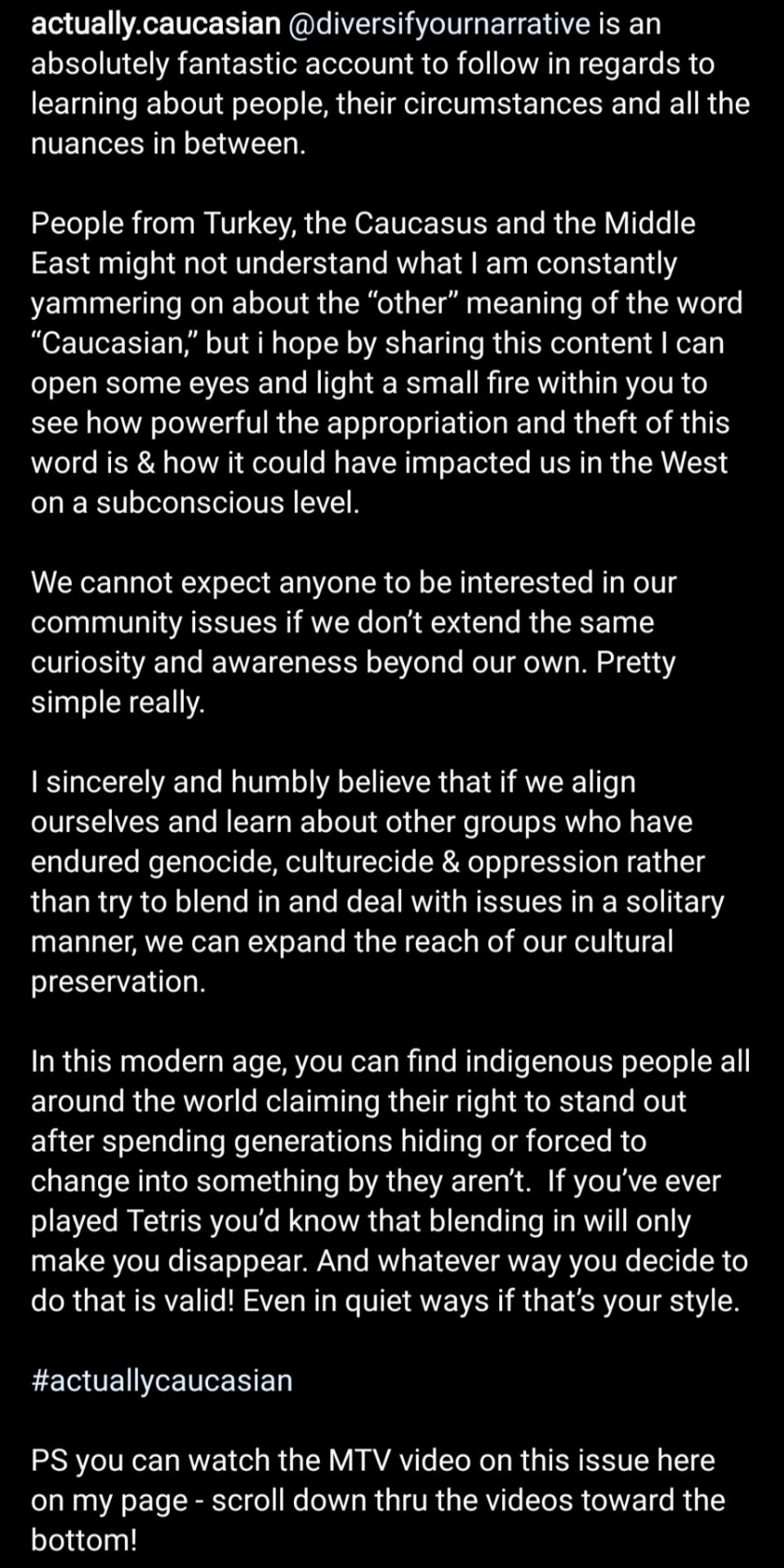
#are you Caucasian??#RU sure?#Caucasus#human geography#indigenous people#indigenous land#the map is not the territory#now you know#racism#fascism#bigotry and hate#white culture#white supremacy culture#blumenbach#history
2K notes
·
View notes
Text
*Benoit de Maillet, consul of Cairo in 1698, throwing the first mummy unwrapping party* hello everyone and welcome to my first unboxing video
8 notes
·
View notes
Text
Holger Fock und Sabine Müller erhalten Paul-Celan-Preis
Der vom Deutschen Literaturfonds alljährlich vergebene, mit 20.000 Euro dotierte Paul-Celan-Preis für herausragende Übersetzungen geht in diesem Jahr an das Übersetzungstandem Holger Fock und Sabine Müller. Damit erhalten zwei verdiente Übersetzer:innen aus dem Französischen den wichtigsten deutschen Übersetzerpreis. Dass auch sie auf das Preisgeld angewiesen sind, haben sie erst kürzlich in…

View On WordPress
#Alain Mabanckou#Antoine Volodine#Christiane Körner#Érik Orsenna#Hinrich Schmidt-Henkel#Holger Fock#Jean Rolin#Joshua Cohen#Karin Betz#Marieke Hamburger#Mathias Énard#Mohamed Mbougar Sarr#Patricia Klobusiczky#Patrick Deville#Paul-Celan-Preis#Prix Goncourt#Sabine Müller#Sylvain Tesson#Ulrich Blumenbach#Ulrich Sonnenberg#Ursula Gräfe
1 note
·
View note
Text
János Székely - Eine Nacht, die vor 700 Jahren begann.
János Székely - Eine Nacht, die vor 700 Jahren begann. #Lesejahr2023 #Ungarn #Roman #Nationalsozialismus #Verfolgung #Buchempfehlung #Lesen #Literatur #Buch #Bücher #DiogenesVerlag
Eine Entdeckung im wahrsten Sinne des Wortes – “Eine Nacht, die vor 700 Jahren begann”. 2020 wurde das unveröffentlichte Manuskript auf einem amerikanischen Dachboden in einer von 137 Kisten entdeckt, 710 Seiten auf dünnem Durchschlagpapier. Nun im Diogenes Verlag von Ulrich Blumenbach übersetzt und auf deutsch verlegt… Continue reading Untitled

View On WordPress
#Bücher#Besetzung#Buch#Buchbesprechung#Diogenes Verlag#Eine Nacht die vor 700 Jahren begann#Entdeckung#Horthy#János Székely#Kritik#Leseempfehlung#Lesejahr 2023#Lesen#Literatur#Nationalsozialismus#Rezension#Roman#Ulrich Blumenbach#Ungarn
0 notes
Text
Kendrick, Drake, and Ethnic/Cultural Identity
One of the most discussed topics during this exchange between the two is if Drake is a culture vulture. In short, yes. He's always been. It boils down to inherited cultural identity and respected history, not the upholding of a social construct of “race.”
Race is a goofy non-biological caste system that operates in various countries and it’s a dumbass global push to get people to embrace a superior to inferior hierarchy in classifying the globe into 5 broad groups solely based on perceived skull sizes, hues of skin color, and perceived traits and phenotypic features via the teachings of François Bernier, Johann Blumenbach, Carl Linnaeus, and them other hoes. Get race tf outta here.
I’m gonna make this concise as possible, but fleshed out a bit for full understanding.
Kendrick Lamar is Black American on both sides with his roots most likely coming out of Mississippi and/or Alabama to Chicago to Cali by way of the Great Migration. (He may even descend from Duckworths from Louisiana). I haven’t done his genealogy, but now I may out of curiosity.
Black American is a double ethnicity. We’re citizens of America (nationality = US Citizen), and our ethnic group (Black) was created & descends from this land (ethnicity = American) through ethnogensis. It has nothing to do with one’s brown skin color or how the cops see us 🙃, but everything to do with the lineage of one’s parents and their parents, etc. (For info on lineage tracing, refer to my post here.)
Black Americans are an ethnic group (the largest from this land and largest in this country after Germans), while “white Americans” are a self-identification race to remove ethnic identity and conflate numbers. I can break this down further in another post if y’all want since American history is complex and will explain why Black Americans have been reclassified seven times by the US government 🙃.
Now.
Culture is largely passed down through your mother, and her mother, and her mother, and so forth for Black Americans (and I’m sure other ethnic groups). No matter if it’s a two-parent or single-parent household, she’s your ultimate teacher in setting the foundation of your cultural upbringing. It’s the same if one is raised by their grandparents. It largely stems from the grandmother. If one’s father is their main parent, that’s a different case of course.
Drake falls in line with this as someone from a single-parent household. He is half Ashkenazi of Latvian and Russian descent (ethnicity) through his mother and of half Black American descent (ethnicity) through his father. He is a dual citizen of Canada and America (nationality), who was raised in Canada with his Ashkenazi Jewish mother and Ashkenazi relatives with an Ashkenazi upbringing. He went to a Jewish day school and was engulfed in all aspects at home.
Kendrick is ethnically and culturally Black American. Drake is ethnically and culturally Ashkenazi. He is also ethnically Black American (through lineage), but not culturally Black American. Does that make Drake a culture vulture? No. He just didn’t have the cultural upbringing but could always immerse himself in learning, appreciating, and respecting the other half of his history and culture.
What makes him one is how he operates as an outsider. He participates in an aspect of Black American culture (Hip-Hop) for his monetary gain, adopts a manufactured image for his perception of believability, and disrespects the people of this culture. “…run to America to imitate culture.” It’s like a jacket to him. He takes it off to try on another (like a Jamaican accent) and swaps for another, etc.
A few examples that’s been touched on: He blackened his face to depict blackface while wearing a Jim Crow t-shirt… That’s specific disrespect towards Black Americans, mocking our history and our ancestors. “Whipped and chained you like American slaves.” That’s specific disrespect towards Black Americans, mocking our history and our ancestors. “[You] always rappin' like you 'bout to get the slaves freed.” Do I even need to explain this? Hopefully it’s understood.
The muthafucka is not like us.
360 notes
·
View notes
Note
so interesting that armenians don't consider themselves european! i am a little uneducated on this topic, so i've never thought otherwise. i'm now gonna research this topic more, thank you. how would you say armenians determine themselves?

I’d like to start by saying that, for me, being considered Asian or European holds no inherent preference. My answer contains no malcontent; I am simply addressing the question as it's been posed. Interestingly, I had never thought of myself as European. I’ve always identified as Asian and as someone from the Caucasus.
I’ll explain my reasoning shortly, but first, let’s not confuse "Caucasian", meaning a person from the Caucasus, and the term "Caucasian" as coined by Blumenbach in his highly problematic racial theory. Many people use "Caucasian" to refer to white people (a surprise to me at first) without knowing the term’s problematic origins. Blumenbach categorized humanity into five groups—Caucasian, Mongolian, Malayan, Ethiopian, and American. His work was mostly scientific, but he showed bias by declaring the skull of a Georgian woman the “most handsome”, suggesting that the most beautiful people lived on the southern slopes of Mount Caucasus. He then made a leap by claiming that whiteness was the “primitive color of mankind”. This is how "Caucasian" became synonymous to "white" and this is why I find the use of "Caucasian" to mean white people so problematic. But, once again, when I call myself/Armenians Caucasian, it is because we are actually from Caucasus.

Armenians are indigenous to the Armenian Highlands, which are bordered by the Pontic Mountains to the north, the Caucasus Mountains to the northeast, the Zagros Mountains to the south, and the eastern Taurus Mountains to the west. This clearly places us in Western Asia, not Europe. Modern-day Armenia occupies only a small part of the historical Armenian Highlands, situated in the South Caucasus. So, in conclusion, as an Armenian, I don’t consider Armenians to be European.
81 notes
·
View notes
Text
Anthropology is a reflection of the Prominant Political/social beliefs of the time
Anthropology is the study of what makes us human. Anthropologists study various cultures (past to present) to better understand them, and the data collected is used to develop anthropological theories. Despite claims of the research/findings being unbiased, factors such as the prominent political and social beliefs of the time influence the anthropologist's research (unintentionally or intentionally). Due to these factors, it is important to examine the prominent political and social beliefs of the time when reexamining anthropological theories.
When you create a timeline of anthropological theories alongside the political and social beliefs of the time, it's clear to see the influences.

18th century
Anthropological theory
Unilineal Evolution: Presented the e idea that there was a sequence of stages that all cultures would go through (Long & Chakov, 2017). Those cultures may not necessarily go through the stages at the same time or pace but would go through the same developmental stages. This would be most popularly become known as the Three Age system. The categories being; THe Stone Age, Bronze Age, and Iron Age. Each indicative of the stage of development through technology
Physical Anthropology: “scientific” approach to study the development of different racial groups. Studies humans through their biological and physiological characteristics to study human development.
Cephalic index: calculations from the measurement taken of the skull. It measured the breadth and length of the skull, which would be then used for the classification of racial groups.
Samuel Morton, a physician furthered this research and linked cranial capacity with moral and intellectual endowments and assembled a cultural ranking scheme that placed large-brained Caucasoid at the pinnacle
Anatomist and natural historian Johan Friedrich Blumenbach believed racial differences were due to adaptation to different environments
Social and Political Beliefs of the time
Enlightenment period: The biggest influence on the formation of scientific development. There was a push away from the religious doctrine, in favor of a more science-based view of society.
There was also an increase in encounters with non-Europeans with the emergence of the Trans-Atlantic Slave trade.
These factors combined to develop an interest in the scientific notion of race
Despite the push away from religious doctrine, scientific thought was still developed based on religious knowledge.
E.g. the Bible story Adam & Eve
They were believed to be Caucasian, making Caucasians the ‘superior’ race, and thus anyone else was inferior.
The main takeaway is that Caucasians were the Superior Race (more specifically Germanic) and all other races delineate from them making them inferior.
These ideas of racial superiority/inferiority would be used to support racist ideologies. Nazis would use this to support their movement.

1920’s-Boasian
Boasian Anthropology: A theory developed by Franz Boas, who is considered the “Father of American anthropology”
These consisted of Boas’s theories on culture and its development.
Cultural Relativism: We must make evaluations based on other cultures rules/beliefs and not our own. Using our own culture as a basis for analyzing other cultures results in biased research.
Boas would argue that “classificatory schemes of evolutionary theory dividing the world into “savage” "barbarian," and "civilized" peoples were "artificial," their pretensions to universal, scientific validity marred by their grounding in Western values.
He would ignore the predominant theories in favor of conducting research.
Social and Political Beliefs of the time
There wasn’t much change in political and social beliefs of the time, but much of the research was influenced by the cultures that were studied. The idea of cultural relativism was influenced by the cultures that boas studied, specifically his study of the Inuit people.
Boas would study under ethnologist Adolf Bastian, a person who believed in “psychic unity of mankind” (idea that all humans held the same intellectual capacity and all cultures were based on the same mental principles)
This would cause a shift in Boas’s approach to his study of the Inuit people.He wanted to understand Inuits as they understood themselves, rather than through his lens
Boas would influence anthropological theory into the mid-twentieth century as evidenced by his students like Zora Neale Hurston
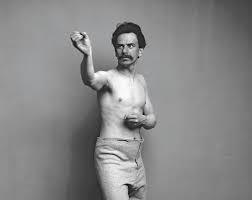
Mid-20th century to the Present
There was a push for a more scientific-backed discipline. Processualism as it would later be classified as was first introduced by Lewis Binford. He believed that there was a certain way that anthropological research should be conducted. His main goal was to develop the
field into a “hard science” by using the scientific method. His focus was on the sub-category, archaeology and how the material evidence was identified.
Archaeological data would be classified into either Technomic (technology/tools, socio-technic (social/relation to social subsystems), and ideo-technic (ideological/ rationalizations in social system)
There was a push for reflection of traditional anthropological research- especially that of the study of race/racism.
Tody anthropological theory mostly focuses on the reflection of traditional anthropological theories
A launch of a public initiative titled, “Race: Are We So Different?” by the American Anthropological Association (AAA)”
Social and Political Beliefs of the time
There was a rise in criticisms and challenging of early anthropological theories. This was due to the rise in the fight for equality by several groups (women, gays and lesbians, African Americans, and Native Americans) with The Civil Rights movement being one of the largest movements.
This was evident by the rise in more people of color entering the discipline.
Processualism as a whole was mostly influenced by the academic community and trying to make it into a scientific discipline. A byproduct of this was ignoring the racist ideologies of past anthropological theories
There was a continued push for reflection and change in the academic community following the Civil Rights Movement.
Anthropology not influenced by society?-Counter
With the use of science, there was this idea that it created an unbiased way of interpreting information, and the outside factor was irrelevant. While it is true that science can be objective, scientists aren’t. Scientists choose what they study and can interpret data in different ways. Due to this, science will only ever offer a glimpse of objectivity. Physical anthropology used a scientific justification with the use of the cephalic index and the systems created based on the data collected for racial classifications. It is important to recognize that just because something claims a scientific basis, doesn’t make it so.
What does it mean when there is anthropological theories developed counte the predominant anthropological theory? Anthropologist like Gordon V. Childe was heavily influenced by Marxist theories. He developed/presented his theories during a time in which Marxism was heavily criticized. While he was still able to publish his works, it was much harder and prevented him for being recognized for his contributions to the field.
Just because there are examples of anthropologists developing theories counter to the prominent political and social beliefs of the time, it doesn’t mean that there can't be a relationship between the two. Rarely in life do you see everybody agree on a single thing. Take “4 out of 5 dentists recommend (blank) toothpaste” for example. The overall opinion of the toothpaste doesn’t change if one disagrees. In the case of anthropological thought/theory, anthropologists remained influenced by political/social beliefs.
While these are good reasons to dispute my claims, there isn’t enough data to support this claim.
Conclusion
The evidence supports the idea of the inter-connected relationship between prominent social/political beliefs and anthropological thought/theory. From the foundation of early anthropological theories in the eighteenth century to the present, anthropology has been formed and reformed by the ideological movements of its time. Creating a lens through which anthropologists can view and interpret cultures, reflecting the wider societal mindset, and forming a dynamic relationship between Academic research and the cultures it seeks to understand
Much of early anthropological thought/theory was rooted in the personal biases of the anthropologists conducting research. They would use religion and “science” (what we would call today pseudoscience) as justification for their beliefs. Franz Boas would become one of the first anthropologists to question this idea as his research found that the earlier thought/theory didn’t reflect his findings. This would later be called Boasian anthropology (named after its creator). This would be the driving belief into the 1960s, where anthropology would then focus on the criticism of early anthropological thought/theory and processualism which was influenced by the many movements pushing for equality. More anthropologists of color and more research on black culture were conducted. Today we still reflect on and criticize early modes of anthropological thought with the continued push for equality.
In conclusion, some may try and argue that there is a distinction between predominant social/political beliefs and anthropological thought/theory, its relationship is undeniable. To study anthropology is not to view it statically but dynamically. It is important to recognize that anthropology isn’t just a story about a culture it studies, but also about the anthropologist’s narrative and how it is influenced by society.
92 notes
·
View notes
Text
The term "Caucasian race" was popularized by Johann Friedrich Blumenbach in the late 18th century. However, it's important to understand that the concept of race is a social construct and not a biological reality. There is no scientific basis for dividing humans into distinct races. The concept of race has been used to justify discrimination and inequality throughout history.
I will never be able to comprehend why people don't realize that race is a very stupid invention that has caused so much harm to innocent people globally. This is why I don't acknowledge the idea of whiteness or the disenfranchisement of Dark Skin Humans worldwide.
Our Black Aboriginal People globally acknowledge that all humanity are the same people.

11 notes
·
View notes
Text
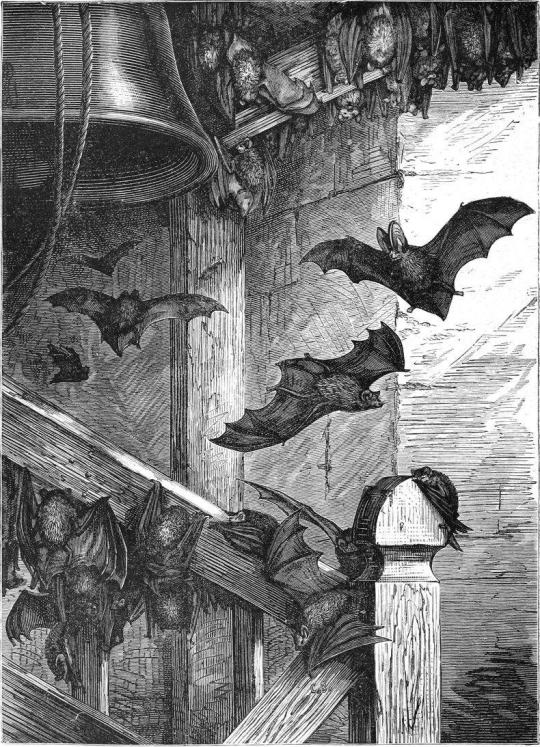
British Bats at Home
Cassell's Natural History (VOL. I).
Engraving, 1896.
Online PDF/eBook Link.
LITTLE NOTE, NOT SO IMPORTANT.
Yes, I could take this time to yap about bats and how cool those little creatures are, but (tragically) I won't--and I could promise you that I will in a future post, but I tend to forget </x
(This is more of an apology note, but I will throw a few little facts your way as compensation).
I couldn't find an illustrator (womp, womp). Many sources only listed one of the authors (without proper credit listing them as anything other than writer/editor); therefore, no artist I can list. However, you can still admire the pretty photos while digesting outdated knowledge from this late 19th-century book... though I wouldn't necessarily read the link I gave as the online PDF/eBook edited the original source (this alteration is from 2017)--this is only a discretion if you wanted to consume the original thing. It seemed more that it was changed to fit the site format. Still, they even changed some chapter names, so it could be a mix of both new and old information (all I'm saying is that I didn't go through the book fully... hell, it's long... but I wanted y'all to know in case since the link takes you to a specific point rather than the index where information on the source is listed.
Now time for... drumroll please...
drumming
drumming
drumming
~~~!~!~!~BAT-!~!~!-FACTS~!~!~!~~~
applause
Okay, okay. You can stop clapping now. Please, I'm blushing. Knock it off, omg, I'm serious.
The scientific name for bat is Chiroptera (1779 by Blumenbach).
They are found in every continent besides Antarctica (although imagine them next to a polar bear... how cute would that be?).
Contrary to popular belief, not all bats hibernate. Various species of bat pull a goose, opting to migrate to gather food in warmer climates.
Bats should stay far away from school zones; as the only flying mammal, they tend to reach 60+ mph while zooming in the air. Feel that wind on your face.
One of the snacks they like to munch on are moths (yes, we're closing with a less interesting one; no, I'm not keeping my bat and moth Squishmallows together anymore💀😭).
Click the links above 'n' below to view the full sources (no. 5 has the most in-depth one about pipistrelli).
U.S. DOI
The Nature Conservancy
Smithsonian
Thank you for letting me snatch your time! Much love; Kaiti <x
(Oh, and if you want to add anything or know the illustrator, please let me know! I'd love to credit them, despite them being dead and all).
#bats#illustration#bat illustration#vampire#gothic#art#engraving#books#Cassell#Cassell's Natural History#volume 1#facts#science#history#natural science#natural history#mammalogy#chiropterology#pipistrello#bat#bat art#gothic art#aesthetic#artwork#british#british bats#1896#1890s#19th century#19th century book
12 notes
·
View notes
Photo


What 'Caucasian' means
Why do people in the US and UK (unlike in most of Europe) refer to European people as Caucasian?
The term "Caucasian" was introduced by the German anthropologist Johann Friedrich Blumenbach, who was busy measuring skulls in Georgia in the 19th century, and for no good reason decided that the Caucasus was the birthplace of mankind. He made division of Aryan, Semitic (Jews) and Hamitic (north Africans), just as it was written in Genesis.
We Europeans did not, of course, wish to be seen as having racial connections with Jews or Africans, and German Nazi extermination policies gave the term "Aryan" a bad name.
Blumenbach's theories have long been discounted in modern anthropology, yet his term lives on. This classification of white non-Jewish European was adopted by US immigration control, who needed to keep a check on the races coming in that were not black, brown or Jewish. "Caucasian" is just an illogical yet convenient category, and so it lives on, whenever we have to fill in an identity form: even if it is just an online dating site.
David Bye, Göd, Hungary
Whites tan to get brown, but naturally brown people stay out of the sun if they can in order to get whiter. Now "white" is a term of abuse, and "Caucasian" is a more innocuous way to describe us.
The paradigm of the “typically Jewish” nose originates in the craniological studies of Johann Friedrich Blumenbach (1752–1840). Blumenbach claimed to have evidence that Jews had an especially prominent nasal bone. Der Giftpilz (The Poisonous Mushroom), a Nazi schoolbook published by the Stürmer Verlag in 1938, provides an example of how such anti-Semitic clichés about body shapes were spread. It was printed in a first edition of 60,000 copies.

Blumenbach assumed that all morphological differences between the varieties were induced by the climate and the way of living and he emphasized that the differences in morphology were so small, gradual and transiently connected that it was not possible to separate these varieties clearly.
Although Blumenbach did not propose any hierarchy among the five varieties, he placed the Caucasian form in the center of his description as being the most "primitive" or "primeval" one from which the other forms "degenerated".
In the 18th century, however, these terms did not have the negative connotations they possess today.
At the time, "primitive" or "primeval" described the ancestral form, while "degeneration" was understood to be the process of change leading to a variety adapted to a new environment by being exposed to a different climate and diet.
Hence, he argued that physical characteristics like skin color, cranial profile, etc., depended on geography, diet, and mannerism. Further anatomical study led him to the conclusion that 'individual Africans differ as much, or even more, from other Africans as from Europeans'.
Like other monogenists such as Georges-Louis Leclerc, Comte de Buffon, Blumenbach held to the "degenerative hypothesis" of racial origins.
Blumenbach claimed that Adam and Eve were Caucasian inhabitants of Asia, and that other races came about by degeneration from environmental factors such as the sun and poor diet.
Thus, he claimed, Negroid pigmentation arose because of the result of the heat of the tropical sun, while the cold wind caused the tawny colour of the Eskimos, and the Chinese were fair-skinned compared to the other Asian stocks because they kept mostly in towns protected from environmental factors.
He believed that the degeneration could be reversed in a proper environmental control and that all contemporary forms of man could revert to the original Caucasian race.

Blumenbach was regarded as a leading light of German science by his contemporaries. Kant and Friedrich Schelling both called him "one of the most profound biological theorists of the modern era.
In the words of science historian Peter Watson, "roughly half the German biologists during the early nineteenth century studied under him or were inspired by him:
#johann blumenbach#pigmentation#kemetic dreams#german#nazi#nazis#caucasian#negroid#chinese#eskimos#inuit#asia#blumenbach#adam and eve#asian#african#africans#racism#scientific racism#european#europeans#european history#dutchland#deutschland
11 notes
·
View notes
Photo

Jean-Léon Gérôme (French, 1824 - 1904) Femmes au bain, 19th century - Slavery gave rise to the figure of the Odalisque, that is the beautiful, white slave girl, a figure of quintessential beauty.
In the late 18th century Johann Friedrich Blumenbach, the father of physical anthropology, the father of scientific anthropology, an 18th century German scholar, assigned the name Caucasian to the people living in western Europe, to the River Ob in Russia to northern Africa, and to India. He called the people in Europe, over to India, well into Russia and North Africa, Caucasians because they were the most beautiful in the world. Blumenbach enjoyed a scholarly reputation that gave his designation enormous heft and it got picked up very quickly.
Immanuel Kant stated that the Caucasians, the Georgians, the Circassians, sell their children, particularly their girls to the Turks, the Arabs, and the Persians, for reasons of eugenics, that is, to beautify the race. The idea of the beauty of Caucasians is linked with the idea of the slavery of Caucasians. Before the Atlantic slave trade to the western hemisphere shaped our ideas about what slave trades are all about, there was slave trade from this part of the world, that goes back to before the reaches of time.
Herodotus writing in the fifth century BC, writing about the enumeration of taxes and tributes paid to the Persian kingdom, collected from the lands it had controlled and the lands even far away in the distance. He said that the voluntary contribution was taken from the Colchians, that is the Georgians, and the neighboring tribes between them and the Caucasus, and it consisted of and still consists of (that is in the 5th century BC) every fourth year 100 boys and 100 girls. This was before Herodotus could even see the beginnings of it. Herodotus also mentioned the tribute from the southern most part of the edges of the Persian world and that was for the people called Ethiopians, what they owed was gold and ivory, people were not mentioned. So, the Black Sea Slave trade was the slave trade in the western world until the 15th century when the Ottomans captured Constantinople and cut the Black Sea off from western Europe. At that point, 15th century, the Atlantic slave trade becomes the western slave trade.
Daniel Edward Clarke, our Cambridge don, also located Circassian beauty, in the enslaved. “The Cicassians frequently sell their children to strangers, particularly to Persians and Turkish Seraglios.” He speaks of one particular Circassian female who was 14, who was conscious of her great beauty, who feared her parents would sell her according to the custom of the country. The beautiful young slave girl became a figure, and she had a name; Odalisque. She combines the powerful notions of beauty, sex, and slavery. Ingres, Jerome, Powers and Matisse specialized in Odalisque paintings.
The figure of the Odalisque faded from memory as the Black Sea slave trade ended in the late 19th century, and the Atlantic slave trade overshadowed that from the Black Sea. Today, the word slavery invariably leads to people of African descent. Americans seldom associate the word Odalisque with with slavery in the Americas. Today many American painters use Odalisque figures, Michalene Thomas for instance who has done a series of what she calls American Odalisque. But the phrase and the figure of the Odalisque has lost its association with slavery. And now in American art history and in contemporary American art, Odalisque simply refers to a beautiful woman, usually unclothed.
If you want to learn more, listen to professor Nell Painter of Princeton University in the YT lecture “Why White People are Called Caucasian.”
#Jean-Léon Gérôme#Gerome#art#french art#france#french#Femmes au bain#white slaves#black sea slave trade#europe#european#europa#fine arts#world history#caucasian
50 notes
·
View notes
Text
filipinos and people speaking to/about filipinos suffer from the same illness and that is the pathological need to remind us that we have been colonized. we can not exist without being told we owe this or that to our colonizers or to some other foreign origin. solicited or unsolicited, they will do it. in an academic setting or under random throwaway comments online, they will always bring it up. we are subjected to measures of cultural, racial, and linguistic purity that does not exist anywhere and which no people on this earth could ever pass.
using spanish, english, malay, hokkien, sanskrit loanwords? that means our languages are nothing but creole to the core. cooking balbacua or caldereta? well, they’re not really “our” dishes; we just remixed them and then we eat them. practicing christianity or islam? i guess nothing about our faiths must be indigenous. we were colonized by the spanish? that makes us more latino than asian actually… or maybe we’re neither latino nor asian but a secret third thing - polynesian! et cetera, et cetera.
don’t even get these people started on popular race science (i.e. pseudoscience) about the so-called origins of filipinos. they sound like reincarnations of johann blumenbach and henry otley beyer with their nonsensical ramblings about the three waves of migration, “mongoloids,” and the “malay race.”
19 notes
·
View notes
Text
Early 19th century reconstruction of the wooly mammoth

The original sketch (which has since been lost, leaving only a copy made by Johann Friedrich Blumenbach) was initually drafted by Roman Boltunov, a Siberian Trader. After buying a pair of mammoth tusks from a local Reindeer farmer, he was led to the recently frozen body from which they were harvested.
After taking measurements of the remains, which had been exposed to scavengers and the elements, Bultanov made a sketch of what he believed the animal would have appeared like when it was alive.
The sketch and measurements were sent to the Russian Academy of Sciences, where it was rightfully labeled as "incorrect." Nevertheless, the drawing would be published in Russian Newspapers. The dessicated remains would eventually be sent to the Imperial Academy in 1807, almost a decade after they had initially been discovered.
5 notes
·
View notes
Text
Damn I went down a Wikipedia rabbit hole and read an article about this fella Johann Friedrich Blumenbach.

I feel bad for him because he’s like, known as the the father of anthropology and even more well known as the founder for the modern classification of races, yeah? So you’d expect him to suck.
But, according to the Wikipedia article,he was actually extremely anti-racist (for his time) and was pro-abolition of slavery. And he tried to emphasize in his own work that once you got down to it the distinctions between races were extremely minute and a huge variety of peoples existed between these categories.
He also wrote several times scathing statements and essays against his contemporaries who used parts of his ideas (such as observing cranial morphology) to justify the horrific racist ideology against black people and of course, a lot of eugenics bullshit came out of that as well.
It sucks because it seems like this guy genuinely was just trying to figure out human biology and origins as related to our environments at a time where modern science was still finding its legs.
But what his contemporaries of his time and the next generations built upon instead was “How can I twist this cranial morphology idea to prove that Europeans like me are the superior race?”
Fucked up. I’d say Rest in peace man but I know you’ve been turning in your grave for centuries, Jo.

2 notes
·
View notes
Text
Further TL;DR rant on Eli Vanto
"Caucasian features."
It's been bugging the absolute f*ck out of me.
Yes, I am back on my Eli Vanto bullshit.
Break it down.
White America is a Color
First, I think that only in America is the word Caucasian used to mean white people. The American understanding of Caucasian as meaning white, European-descended people was upheld by the Supreme Court in 1923. The case of United States v. Bhagat Singh Thind ruled that under the Naturalization Act of 1906 that only "free white persons" - also called Caucasians - and "aliens of African nativity and persons of African descent" to become naturalized citizens. Bhagat Singh Thind's argument rested on the descent of Europeans and Indians from a common Proto-Indo-European origin. The court disagreed.
Excerpt below, full text here.
What we now hold is that the words "free white persons" are words of common speech, to be interpreted in accordance with the understanding of the common man, synonymous with the word "Caucasian" only as that word is popularly understood. As so understood and used, whatever may be the speculations of the ethnologist, it does not include the body of people to whom the appellee belongs. It is a matter of familiar observation and knowledge that the physical group characteristics of the Hindus render them readily distinguishable from the various groups of persons in this country commonly recognized as white. The children of English, French, German, Italian, Scandinavian, and other European parentage quickly merge into the mass of our population and lose the distinctive hallmarks of their European origin. On the other hand, it cannot be doubted that the children born in this country of Hindu parents would retain indefinitely the clear evidence of their ancestry. It is very far from our thought to suggest the slightest question of racial superiority or inferiority. What we suggest is merely racial difference, and it is of such character and extent that the great body of our people instinctively recognize it and reject the thought of assimilation.
It is not without significance in this connection that Congress, by the Act of February 5, 1917, 39 Stat. 874, c. 29, § 3, has now excluded from admission into this country all natives of Asia within designated limits of latitude and longitude, including the whole of India. This not only constitutes conclusive evidence of the congressional attitude of opposition to Asiatic immigration generally, but is persuasive of a similar attitude toward Asiatic naturalization as well, since it is not likely that Congress would be willing to accept as citizens a class of persons whom it rejects as immigrants.
So, in America, the term Caucasian means 'white people' and not people of the Caucasus, or a group of people who have 'Caucasian features.' This is still accepted and common usage, despite the science of race being on a par with the sciences of alchemy, astrology, phrenology, a flat earth and the sun orbiting it.
Who with the What, Now?
A German philosopher named Christoph Meiners started the whole shitshow. He divided the races into the 'Caucasian' or 'beautiful' race and the 'Mongoloid' or 'ugly' race. Johann Friedrich Blumenbach carried it further in 1795, dividing humanity into five races by skin color.
First, this image is all over the search results, no findable attribution, but I'm using it because it's accurate in terms of skin colors:
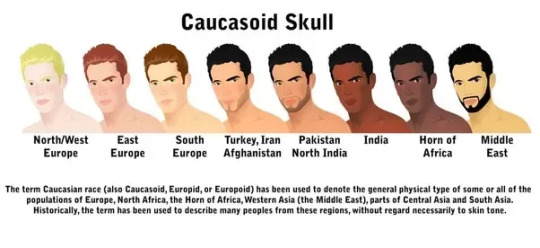
Other 'Caucasian features' included narrow noses with small nostrils and a sharp nasal sill, small mouths with thin lips, prominent supraorbital (above the eye socket) ridges, orthognathism and high cheekbones. Of course, in the late 1700s when all this was being quantified into 'racial features' not many Caucasoids fit into the categories. Not a lot of people do today. I'd love to have everyone in America take a 23-and-Me test, then make them sit down, shut the fuck up and think.
Star Wars and Mis-coloring
I am old enough to remember when Lando Calrissian was the only black man in the galaxy.
Eli Vanto.
Tan.
Really.
The definition of 'tan' is a yellowish brown color, or the processing of leather, but we're going with the classic "brown or darkened shade of skin developed after exposure to the sun." In short a tan is acquired and not an innate skin color. It doesn't help that one of the most referenced fandom resources repeatedly characterizes brown people as 'tan.'

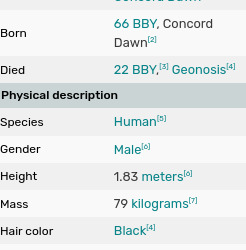
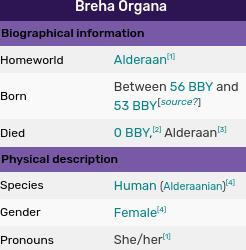

Even Breha Organa is miscolored as 'golden tan.' These guys did not acquire a goddamn tan hanging out on Scarif. Luke Skywalker was mighty white even after living his whole life on a desert planet, and Obi Wan had not a trace of tan despite living there as long as Luke. These are brown people. Black characters such as Adi Gallia and Mace Windu are characterized as "dark."
For shit's sake. Is everyone at Wookiepedia afraid of the word 'brown?'
Light brown. Medium brown. Dark brown.
I realize that the GFFA doesn't have Earth's definitions of ethnicity, nationality, or race but miscoloring is miscoloring. Tacking on 'Caucasian features' is adding a racist trope to insult. Structural racism in the US is deeply ingrained and often the default setting when it comes to media. It is important to give people their representation when it is right fucking there.
Eli Vanto is brown. His canon appearance is in the comics, and while he might have been originally storyboarded as a white redhead, he did not stay that way. His voice actor in the audiobooks gave him a Texas twang, but maybe in other versions of the audiobook, he speaks with a different accent.
Turkish Eli? Sure.
Brazilian Eli? Absolutely.
Oaxacan Eli? Why not.
Desi Eli? Heck yes.
Mizrahi Eli? Bring it.
He's brown. Not white. Not tan with Caucasian features. He is as brown as Thrawn is blue.
24 notes
·
View notes